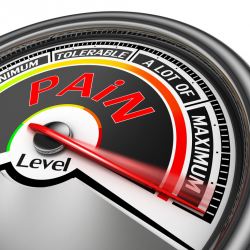
If you have ever been in severe pain, you understand the feeling of urgent relief at any cost – unless of course, you enjoy pain, but that’s a topic for another article. According to a recent paper, 120 million people have experienced pain, and 40 million of them have experienced severe pain at some point in their lives. While most acute pain eventually resolves, chronic pain may be a lifelong burden.
Science has shown that standard pharmacotherapy is effective in treating most types of pain and safe when used as prescribed. However, 30-40% of the U.S. population is looking for alternative ways to treat pain due to fear of dependence on medication, fear of adverse effects, or inadequate pain control - spending a lot of money on things like herbal supplements, acupuncture, and biofeedback. Whatever the reason, the result is a multi-billion-dollar industry called Complementary and Alternative Medicine (CAM).
So-called “alternative treatments” are neither cheap nor covered by health insurance. Out-of-pocket spending for back pain, neck pain, and arthritis alone is reported to be as high as $8.5, $3.6, $2.3 billion, respectively. That is why it is important to look at the scientific evidence on whether or not these treatments work. And based on results of a recent study published in Mayo Clinic Proceedings (September 2016), we are inclined to say, “save your money.”
The paper reviewed randomized controlled trials done in the U.S. from 1966 to 2016. The authors compared the effectiveness and safety of commonly pursued alternative modalities like “acupuncture, manipulation/massage, relaxation/meditation, tai chi, yoga and dietary supplements (chondroitin, glucosamine, methylsulfonylmethane/MSM, S-adenosylmethionineS-AME)”. The researchers focused on common causes of chronic pain such as back, neck, and knee pain; fibromyalgia, and severe headaches.
The results, unfortunately, were all over the place. No treatment modality was found to be consistently effective for any particular ailment across the studies. There was no significant evidence that supplements like glucosamine or chondroitin were effective in treating joint pain. And for the other modalities, the authors stated that there were more positive, than negative, results for only the following:
- Acupuncture and yoga for back pain
- Acupuncture and tai chi for knee pain
- Massage therapy for neck pain (with short-term benefits)
- Relaxation techniques for severe headaches
The cumulative data are weak with much of the self-reported improvements being either modest and/or short lived. The authors themselves conceded that the studies they reviewed were small (comprising mostly <100 participants). There was significant variability in design and therapeutic standards, and no standardization in measured outcomes. The patient demographics were limited predominantly to white females; meaning, the findings are not representative of the general population. While there were no serious adverse effects reported in any of the studies, the authors stated that less frequent adverse effects were likely not reported.
So, before you purchase a bottle of “natural” pain remedy, consider that you may be spending your hard earned dollars on something without proven value.
Source: http://www.mayoclinicproceedings.org/article/S0025-6196(16)30317-2/fulltext
